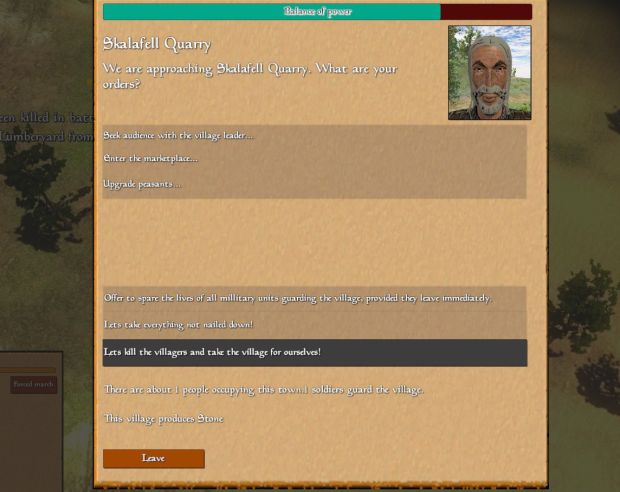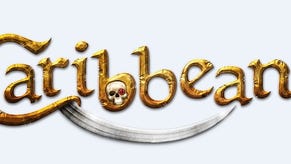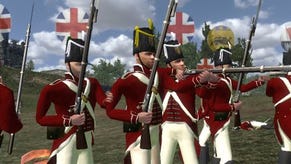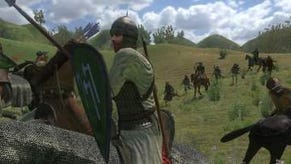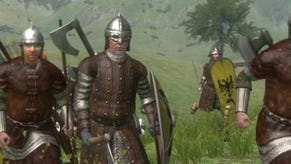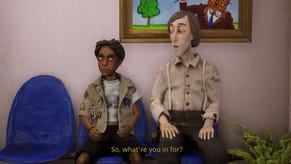Premature Evaluation: Veil of Crows
Lords, castles and dialogue boxes
Every week we launch Brendan from a catapult into the early access fortress. This time, the haphazard RPG adventuring of Veil of Crows [official site]
I’ve just murdered four villagers. I was grumpy and I wanted their village, so I went in with eleven peasants and killed them and took their lumberyard. To be fair, they murdered four of us right back. Sadly, all the bodies now lying on the village grounds are practically indistinguishable - all the same greyish peasant corpse. I own a village now, but I am still grumpy. Is it because the kingdom who once guarded the lumberyard are now sending an army to take back their rightful land? No. It’s just because Veil of Crows is messy, buggy and not very fun.
"Mount & Blade but not good" – that’s how I’d describe the current state of this RPG-strategy mix. The world map is instantly familiar, right down to the style of font floating above the townships and hamlets. You start out as a lonely hero - a fighter, adventurer, deserter or, in one instance, as the leader of a small band of refugees. Then its off you go to seek fortune, land and titles. I began life as Insufferable Patrick, a horse thief with little gold to his name but a solid friend and second-in-command called Pus-sodden Kirk. They were meant to be heroes but, as it turns out, they became the victims of both my own confused decisions and the game’s broken systems. They never had a chance.
It’s split into two halves – the world map and battles. Encountering another hostile force on the world map and challenging them to a fight will throw you (via an annoyingly freezy and stuttering loading screen) into a battle map. Unlike M&B you don’t control your hero and shout commands as you hack away with the rest of them. This is strictly a top-down clicking affair, a skeletal Total War in which you send troops to attack or form them into lines, ready for the assault.
The methods of doing this, through dragging boxes over your men and then dragging boxes over the enemy’s men, is workable enough, if not exactly ideal. Even the most basic commands have to be given with shortcuts like holding alt or ctrl as you click and drag, in a way that feels unintuitive even by the standards of other strategy games. For this and other reasons, every battle feels a bit shonky. Some of that feeling arises because both your own men and the enemy's men don’t really stand out from the landscape, or from each other. The lighting and textures of the surrounding battlefields make everything look like a discoloured gruel, and all fights seem to culminate with both forces fumbling around each other, flailing wildly as they form a bizarre medieval mosh pit.
There is an auto-resolve button, thankfully, which I learned to use far too late in my short playthrough. This means much of the (mis)adventure can be relegated to the overworld. From this perspective, I approached it like I might Mount & Blade, because this is the vibe it so deeply desires to give off. I wandered into the nearest town, a foggy place called Ghostmarsh, and asked to see his lordship. “What work have you got for an honest fellow and definitely not a horse thief?” my character would have asked, if he could speak. The lord offered some kill-these-bandits missions, a fetch quest for lumber and a chance to bring him prisoners. Off I went to hire some peasants from the local farms and do some murdering.
Of course, I also stopped in other towns to see if they had some jobs for me too. They did: bandit-hunting missions, fetch quests and prisoner delivery. Virtually all towns have this same small handful of tasks. I took them all anyway, failing to understand that there was a time limit on each of them. After a few days, my relationship with all these towns would be diminished because I had not completed any job yet asked of me. I was just some guy who came into the villages, said “I can save you!” and recruited a couple of peasants before disappearing forever. Like a cowboy builder with a rusty sword instead of a paint scraper.
Eventually, I did run into a band of brigands who I felt comfortable taking on. The battle was short, yet somehow still felt longer than it needed to be. The four bandits stood in the same place until we came to them. They killed two of my peasants before we won the day. Afterwards we claimed our reward from the village who had hired us. I heard the clinking of money but did not see the volume in my gold purse at the top of the screen increase. I would only discover much later that this doesn’t seem to be tied to my actual gold level, which is hidden in a much smaller font at the bottom left of the screen. I still don’t know what the value at the top of the screen means.
After scouring the map for something new to do aside from the handful of sorry “quests” I decided to take things up a notch. Once a thief, always a thief. But this time, a horse would not suffice. This time, we would steal a village.
Skalafell Quarry was a ripe target because it only had two people living there. We offed them in an auto-resolved double homicide and took the quarry for our own. We were now at war with the kingdom of Hrundel, who owned all the land around here. Not that I could see all the land around here, because a black shroud covers everything outside of your viewing range – even places you have previously explored. The idea behind this seems to be to create a world in which you don’t always know what’s happening outside your own kingdom. Sadly, it also creates a world in which you don’t know where anything is. It’s hard to understand the geography of various fictional realms without a map to guide you. As such, our exploring was limited to a kind of blind wandering. If you own a settlement, that area always stays revealed, but once it is taken from you in a siege or war, it’s back to black.
For now, we were safe in Skalafell Quarry. But the Hrundelgrumps were soon going to come down on us heavily. Bands of men sporting angry emojis for banners were roaming the nearby plains.
I gathered the men, loaded them up with all the stone they could carry and abandoned the village. We could sell the stone elsewhere for a tidy profit and just go steal another village from another kingdom.
An idea struck me as we wandered around, though. Why not just steal from the trade caravans? These wee wagons criss-cross the world map, guarded by very few fighters, if at all. I intercepted one in another kingdom. “Let’s take the goods!” I ordered when a dialogue box popped up. But the button at the bottom of the screen, marked “Steal”, remained greyed out, un-clickable. I tried another caravan, and another. It was impossible to rob no matter how much I clicked. The hopes of my humble horse thief were completely dashed thanks to what I assume was a bug.
So it was back to village stealing for Pus-sodden Kirk and Insufferable Patrick. That’s when we nabbed the lumbermill and killed the four villagers who worked there. It’s also possible to make diplomatic gestures, like bribing people to join you or threatening them to go home. But the bribery requires either more money or a higher skill than I currently had (and at this stage I was not willing to grind for either of those). So a killing spree was ordered. And at the end of it all, there I remained, the grumpy owner of a lumber mill I didn’t really want. Here's a screenshot of us murdering people. You can't really make it out, I know, so you'll have to take my word for it.
At this point I gave all the gold in our stocks to Pus-sodden Kirk and told him to go and see the lord in the nearest neutral town, but he only found the lord of the nearest “neautral” town, a blond-haired man who was a vassal of the esteemed "house 12". I requested an audience with this dialogue box of a man and offered him the entire purse of money (324 gold pieces) to improve relations with his strangely numerical kingdom. He gave it back, presumably insulted by such a small offering. I suppose House 12 do not lower themselves for such a pittance. I attempted to negotiate a trade deal instead. Maybe we could sell our lumber to him? The option to offer this trade deal was "greyed out" – I was not well liked enough. I threatened him, demanding money or else my seven men would come and kill all 106 of his, I swear to God. They option to finalise this threat was greyed out, for reasons unknown. I became infuriated and clicked on the dialogue option to declare war. The button to start a war was also greyed out.
Irritated beyond recognition, Pus-sodden Kirk slouched back to the lumber village and I pressed the fast forward button, increasing the game’s speed by a factor of 10 in an effort to hasten my own demise. For once, it worked. An army from the kingdom from whom we had originally stolen the village arrived and started a fight. For some reason it didn't invite me to take part in this final stand but instead auto-resolved of its own volition. This was probably for the best. Finally, I could rest. Finally, I was dead.
It was an odd relief to be rid of the horse thief and his crew of ill-fated losers, because it meant I didn’t have to play this any more. A semi-functional Mount & Blade with all the grind and none of the personality. It’s easy to see the ideas behind it all, unfortunately they are all less-interesting versions of TaleWorlds’ masterpiece of sword-fighting RPG nonsense, all backed up by a grey and plain strategy element that feels just as underwhelming. If anything, the only thing it achieves so far is anticipation for Mount & Blade II: Bannerlord or a desire to revisit the first game with a similar unlucky hero. Heaven knows, the tale of Patrick and Kirk would be much better served in that kingdom than in this messy land.
Veil of Crows is available on Steam early access for £10.99/$14.99. These impressions are based on build 1793876






